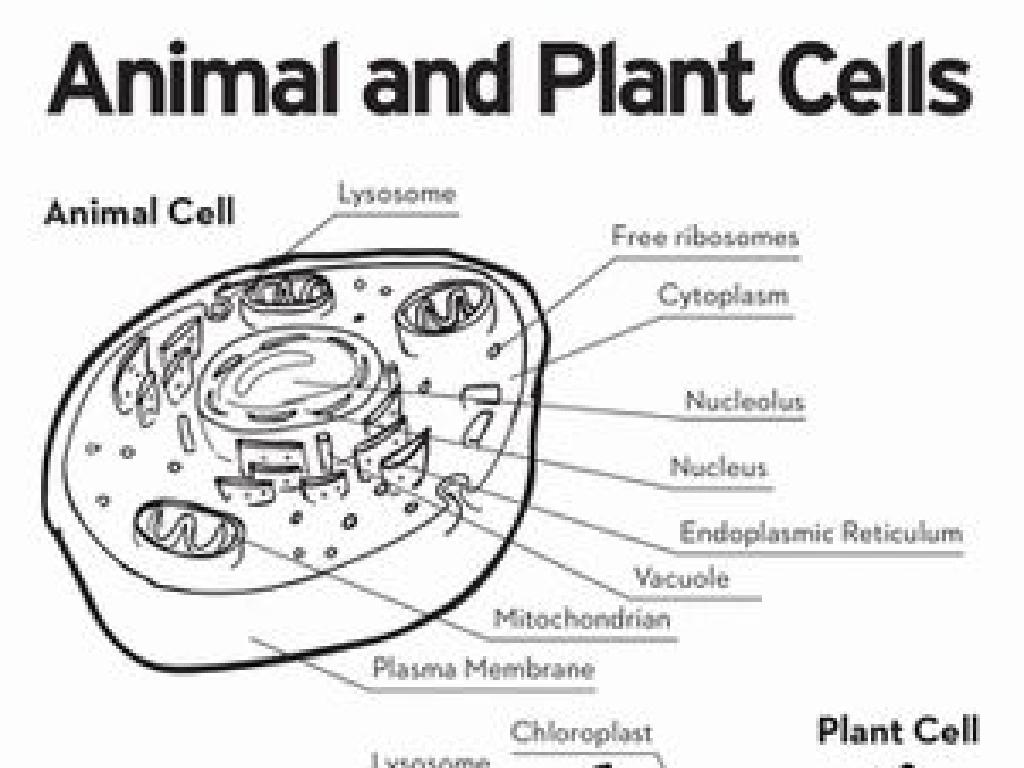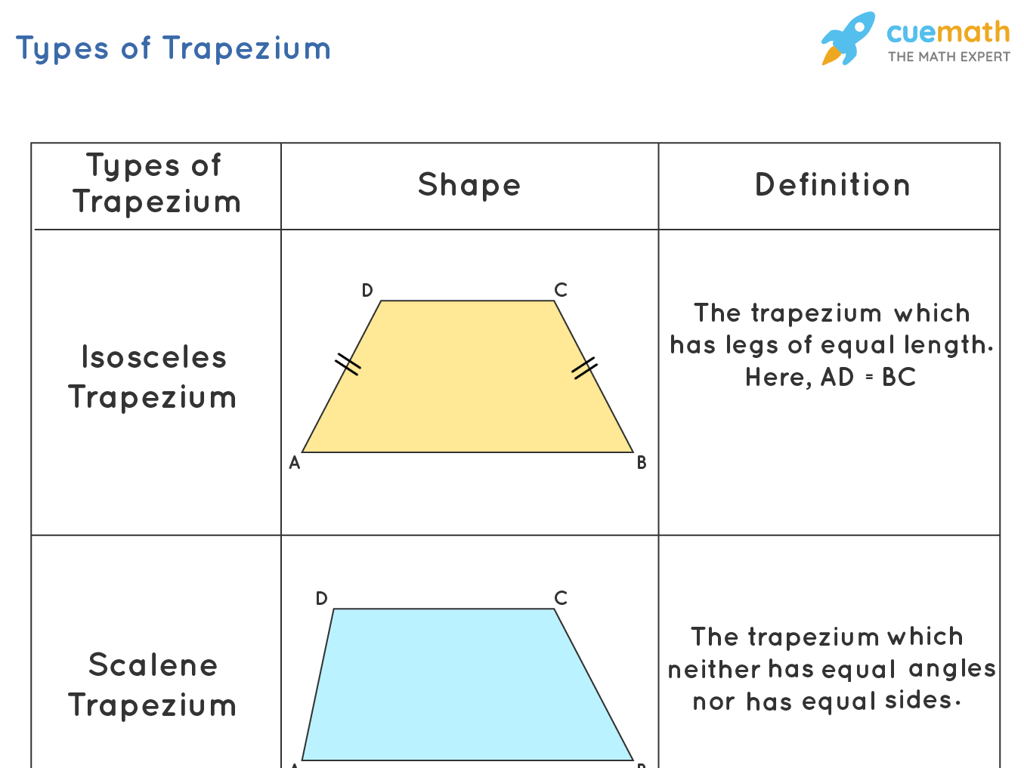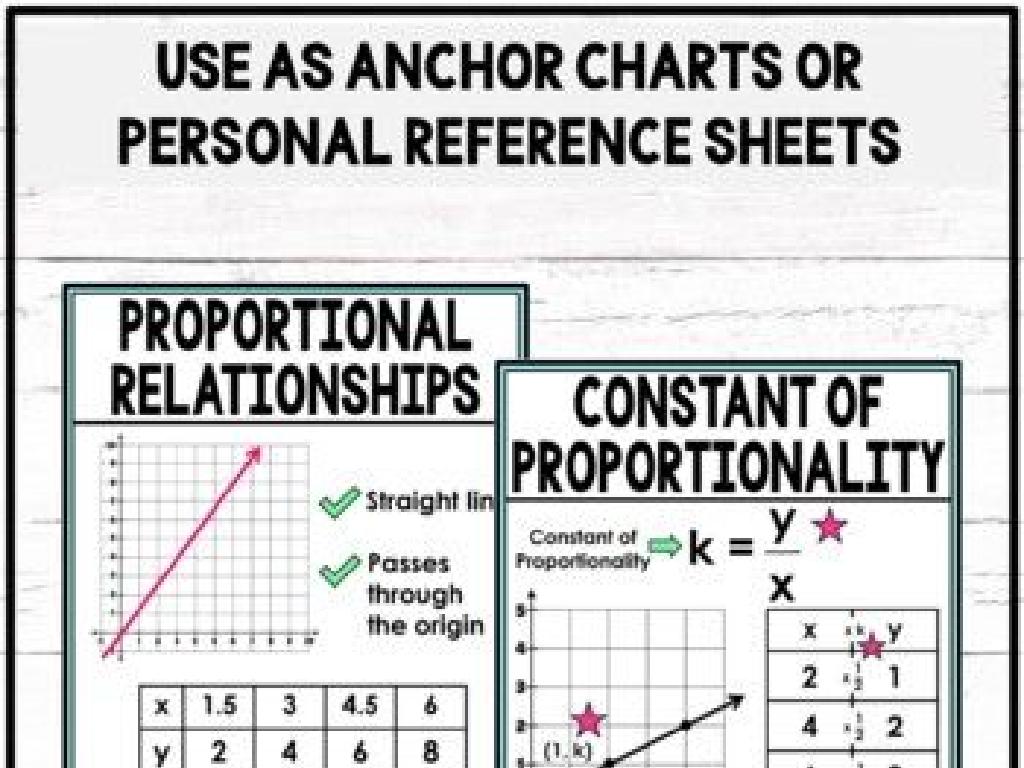Changes To Earth'S Surface: Erosion
Subject: Science
Grade: Fourth grade
Topic: Rocks And Minerals
Please LOG IN to download the presentation. Access is available to registered users only.
View More Content
Today’s Adventure: Erosion!
– Earth’s skin: soil & rock layers
– Just like our skin protects us, layers of soil and rocks protect Earth.
– Erosion shapes landscapes
– Mountains, valleys are often formed by erosion.
– Water, wind, ice cause erosion
– Rivers carve canyons, wind sculpts deserts, glaciers grind valleys.
– Erosion’s role in rock cycle
– Erosion breaks down rocks, which can form new soil or sediment.
|
This slide introduces the concept of erosion as a powerful force that constantly shapes the Earth’s surface. Begin by explaining that the Earth has layers, much like an onion, and these layers are made up of soil and rocks. Discuss how erosion is responsible for creating many of the natural landscapes we see, such as mountains and valleys. Illustrate how different elements like water, wind, and ice contribute to erosion by giving examples such as river canyons, desert dunes, and U-shaped valleys formed by glaciers. Finally, tie erosion into the rock cycle, explaining how it plays a crucial role in breaking down rocks into smaller pieces, which can eventually form new soil or become part of sedimentary rocks. Encourage students to think of examples of erosion they have seen or heard about.
Understanding Erosion
– Erosion wears away Earth’s surface
– Erosion is like a vanishing sandcastle
– Just like waves wash away a sandcastle, erosion changes landscapes
– Water, wind, ice, and gravity cause erosion
– Rivers carve valleys, wind sculpts rock, glaciers grind stone, and gravity pulls soil downhill
– Erosion shapes our planet
|
This slide introduces the concept of erosion to fourth-grade students by comparing it to the familiar experience of a sandcastle being washed away by waves, which makes the concept relatable and easier to understand. Emphasize that erosion is a natural process that shapes the Earth’s surface over time. Discuss how different forces like water, wind, ice, and gravity contribute to erosion by giving examples such as river valleys formed by water erosion, desert landscapes shaped by wind erosion, valleys carved by glaciers, and landslides caused by gravity. Encourage students to think of examples they may have seen in their own experiences, such as soil erosion on a hillside after heavy rain.
Types of Erosion
– Water Erosion: Rivers and rain
– Water cuts paths in the earth, creating valleys and canyons
– Wind Erosion: Dust and sand
– Wind carries particles that wear down surfaces over time
– Ice Erosion: Glaciers shaping land
– Glaciers move slowly, carving out the land beneath them
– Gravity Erosion: Rockslides
– Gravity pulls rocks and soil down slopes, changing the landscape
|
This slide introduces students to the concept of erosion and its various types. Water erosion is caused by the movement of water, particularly in rivers and during rainfall, which can carve out the land and create new geological features. Wind erosion occurs when strong winds transport dust and sand, gradually wearing down rock surfaces. Ice erosion is the result of glaciers moving across the land, scraping and reshaping the ground beneath. Lastly, gravity erosion happens when gravity causes rocks and soil to move downhill, leading to phenomena like rockslides and mudslides. Encourage students to think of examples they may have seen or heard about, such as the Grand Canyon (water erosion) or sand dunes (wind erosion).
Erosion in Action: Transforming Landscapes
– Erosion: A powerful Earth shaper
– Real-world erosion examples
– Grand Canyon formation, beach sand from rocks
– Visuals: Before and after erosion
– Compare past/present photos of a coastline
– Erosion’s impact on habitats
– Habitats can change, affecting plants/animals
|
This slide aims to illustrate the concept of erosion and its effects on the Earth’s surface. Begin by explaining erosion as a natural process that shapes the landscape by wearing away rocks, soil, and sand. Use the Grand Canyon as a prime example of erosion over millions of years. Show before and after pictures of landscapes such as coastlines or riverbanks to visually demonstrate the changes caused by erosion. Discuss how these changes can alter habitats, potentially leading to the relocation or adaptation of plant and animal species. Encourage students to think about how erosion might affect their local environment and to consider the long-term impacts on the planet’s ecosystems.
Erosion vs. Weathering: Shaping Earth
– Weathering breaks down rocks
– Like a hammer chipping away at a statue
– Erosion moves rock pieces
– Like wind carrying sand from one place to another
– Both change Earth’s surface
– Together, they sculpt landscapes
– Think of a sculptor: weathering chisels, erosion clears away
|
This slide introduces the concepts of erosion and weathering and how they work together to shape the Earth’s surface. Weathering is the process that breaks down rocks where they are, similar to how a hammer chips away at a statue. Erosion is the movement of rock pieces by natural forces like water or wind, akin to how wind can carry sand from one place to another. While weathering is the act of breaking down, erosion is the act of transporting those pieces. Both processes are natural sculptors of the landscape, with weathering chiseling away at the rocks and erosion clearing the debris, together creating valleys, mountains, and other landforms. Encourage students to think of examples of weathering and erosion they have seen or can imagine.
Human Impact on Erosion
– Building accelerates erosion
– Farming practices can increase erosion
– Conservation slows erosion down
– Natural areas like parks and forests reduce erosion.
– Planting trees helps protect soil
– Trees’ roots hold soil together, preventing it from washing away.
|
This slide discusses how human activities such as construction and agriculture can contribute to the acceleration of erosion, a natural process that wears away the Earth’s surface. It’s important to explain to students that while erosion is a natural process, our actions can either speed it up or slow it down. Building on land removes vegetation that protects the soil, and certain farming methods can strip the land of its nutrients, making it more susceptible to erosion. On the other hand, protecting natural areas and engaging in activities like planting trees and conserving soil can help reduce the rate of erosion. Encourage students to think of ways they can help at home or in their community.
Erosion Experiment: Seeing Erosion in Action!
– Simulate rain using a watering can
– Observe changes in sand/soil shape
– Watch how water moves and reshapes the sand or soil, just like rain erodes the Earth.
– Understand erosion’s effects
– Erosion can make big changes over time to the Earth’s surface.
– Discuss observations as a class
|
This slide introduces an interactive class activity to demonstrate the concept of erosion. The experiment involves simulating rainfall using a watering can over sand or soil to show how erosion changes the Earth’s surface. Students will observe the effects of water on the landscape, which will help them understand how natural forces like rain contribute to erosion. After the experiment, facilitate a discussion where students can share their observations and reflect on how erosion can have significant impacts over time. Provide guidance on setting up the experiment, ensuring safety, and encourage students to ask questions throughout the activity. Offer variations of the experiment, such as using different amounts of water or comparing different types of soil or sand.
Class Activity: Erosion Engineers
– Become an Erosion Engineer!
– Mission: Protect a sandcastle
– Use materials to prevent erosion
– Sand, straws, toothpicks, plastic wrap, water
– Consider water and wind effects
– How can we stop the castle from washing away?
|
In this engaging class activity, students will apply their knowledge of erosion by becoming ‘Erosion Engineers’. They will design and build a model that aims to protect a sandcastle from the effects of erosion, using provided materials such as sand, straws, toothpicks, plastic wrap, and water. Encourage them to think creatively about how to prevent water and wind from damaging their structures. This hands-on experience will help them understand the challenges of erosion and the importance of engineering solutions in real-world scenarios. Possible variations of the activity could include using different materials to simulate vegetation, testing the models with varying strengths of water flow, or comparing the effectiveness of different designs among groups.
Reflecting on Erosion
– Recap of erosion lessons
– Erosion is the wearing away of Earth’s surface by wind, water, or ice.
– Discuss erosion prevention models
– How effective was your model at preventing soil from washing away?
– Share ideas to protect Earth
– Class discussion and thoughts
– Let’s talk about what we can do to help reduce erosion.
|
This slide aims to summarize the key points learned about erosion and to reflect on the hands-on activity where students created models to prevent erosion. Begin by recapping the definition and causes of erosion. Then, discuss the effectiveness of the erosion prevention models that students created, encouraging them to think critically about their designs and what worked or didn’t work. Open the floor for students to share their thoughts on how we can protect our planet’s surface from erosion, fostering a sense of environmental stewardship. This discussion will help reinforce the concepts learned and allow students to apply their knowledge to real-world situations.






